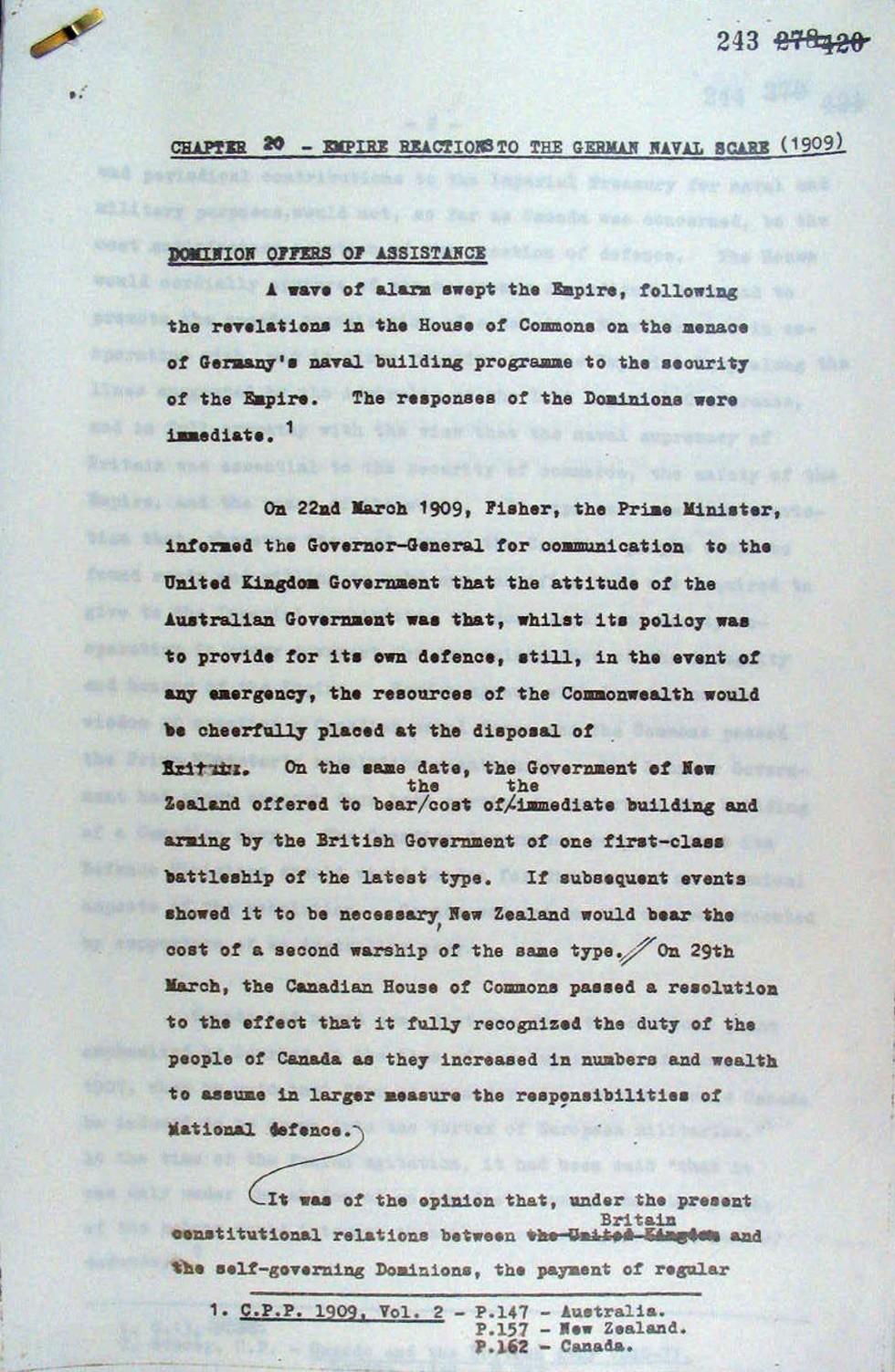


Transcript
[Underlined heading:] CHAPTER 20 – EMPIRE REACTIONS TO THE GERMAN NAVAL SCARE (1909)
[Underlined subheading] DOMINION OFFERS OF ASSISTANCE
A wave of alarm swept the Empire, following the revelation in the House of Commons on the menace of Germany's naval building programme to the security of the Empire. The responses of the Dominions were immediate. 1
[Footnote 1 reads 'C.P.P. 1909, Vol. 2 – P. 147 – Australia. P. 157 – New Zealand. P. 162 – Canada.' End footnote.]
On 22nd March 1909, Fisher, the Prime Minister, informed the Governor-General for communication to the United Kingdom Government that the attitude of the Australian Government was that, whilst its policy was to provide for its own defence, still, in the event of any emergency, the resources of the Commonwealth would be cheerfully placed at the disposal of Britain. On the same date, the Government of New Zealand offered to bear [word 'the' inserted later] cost of [word 'the' inserted later'] immediate building and arming by the British Government of one first-class battleship of the latest type. If subsequent events showed it to be necessary, New Zealand would bear the cost of a second warship of the same type. [Handwritten double line, possibly indicating paragraph break.] On 29th March, the Canadian House of Commons passed a resolution to the effect that it fully recognized the duty of the people of Canada as they increased in numbers and wealth to assume in larger measure the responsibilities of National defence. [Handwritten line joining paragraphs.]
It was of the opinion that, under the present constitutional relations between the United Kingdom [crossed out, replaced with 'Britain'] and the self-governing Dominions, the payment of regular
[End excerpt.]
About this record
This page is an extract from a manuscript about the history of Australia’s defence policy. It was written by Sir Frederick Shedden after he retired from the Australian Department of Defence. The manuscript was never published.
Related themes
Need help with your research?
Learn how to interpret primary sources, use our collection and more.


